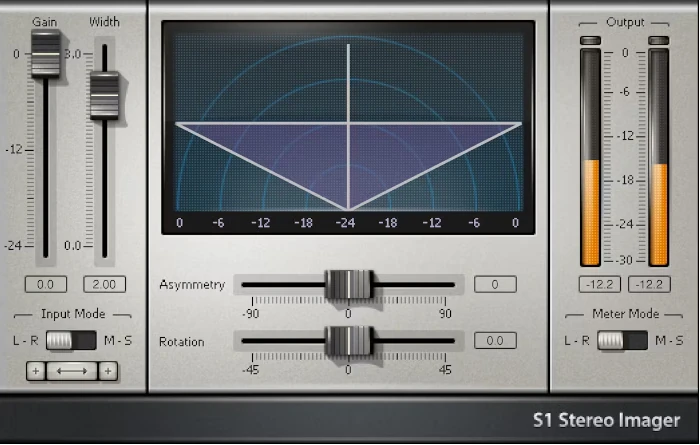Imagine standing in the midst of an orchestra, enveloped by a sea of sound, feeling each note and beat resonating from every direction. This immersive experience, rich with depth and width, is what every music producer dreams of creating. Yet, achieving this expansive sound in your mix doesn’t require a massive studio or decades of experience. The secret ingredient? Effective panning! Whether you’re a newbie aiming to bring your first track to life or a seasoned producer looking to add that finishing sparkle, mastering the subtle art of panning can radically elevate your music.
Ready to drag your audience into a vibrant world of sound? Dive into this guide where we’ll unpack panning techniques that will transform your tracks into captivating, immersive experiences. From basic adjustments to advanced tricks, discover how you can effortlessly add depth and width, making your mixes sound as expansive as they feel.
1. Understanding Stereo Image and Psychology of Sound
In the art of music production, the stereo image is a vital concept that serves as the canvas for your auditory masterpiece. Essentially, it involves the use of two audio channels to create a sense of space and dimension in your mix. This is where panning comes into play, acting as the brush that paints depth and width into your musical creation.
The Psychology of Sound
Our brains are inherently wired to interpret spatial cues from sound. When we perceive a sound coming from a particular direction, it’s often because of the subtle differences in timing and volume between what our left and right ears hear. This is why panning can be such a powerful tool in music production. By strategically placing sounds within the stereo field, you can guide your listeners’ attention and evoke emotional responses.
Practical Tips for Panning
Start by visualizing your mix as a 3D space. Imagine instruments and vocals positioned around this space, with some elements closer to the center and others more towards the edges. A classic example is the placement of a drum kit. You might pan the hi-hats slightly to the right and the snare slightly to the left, simulating how a listener might hear a live drummer.
To create depth, consider utilizing automation to subtly move elements around the stereo field. This technique can add a dynamic quality to your mix, making it more engaging. Additionally, experimenting with mid/side processing can enhance the stereo image by adjusting the balance between the center and the sides of the mix.
Ultimately, understanding the stereo image and the psychology behind it allows you to harness panning more effectively. This knowledge helps transform a flat sound into a vibrant, immersive experience for your audience.
2. Techniques for Wide Stereo Imaging
Creating a wide stereo image is an essential technique to master when using panning to create depth and width in your mix. Imagine listening to a song and feeling enveloped by the music, with each instrument occupying its unique space in the stereo field. This sensation is the result of effective stereo imaging, and panning is your secret weapon.
Utilize Panning Strategically
Start by panning different elements of your mix across the stereo field. For example, placing guitars slightly left and right while keeping the vocals centered can create a sense of space. Think of your mix as a canvas, with each instrument painted in different positions along the width. This technique not only provides clarity but also enhances the listener’s experience by adding width.
Apply Stereo Widening Plugins

Plugins like iZotope Ozone Imager or Waves S1 Stereo Imager can help widen the stereo field. These tools manipulate phase and delay to create the illusion of more space. However, be cautious of overuse, as excessive widening can lead to phase issues. A practical tip is to subtly apply these plugins to background elements, like synth pads, to add depth without muddying the mix.
Experiment with Mid/Side Processing
Mid/Side processing is another powerful method to enhance stereo width. By isolating the ‘Mid’ (center) and ‘Side’ (stereo) components of your mix, you can independently adjust their levels. Increasing the ‘Side’ content can make the stereo image feel broader. This technique is especially effective on reverb returns, creating a lush, expansive soundscape.
These techniques, when combined with thoughtful panning, can transform your mix from a flat, two-dimensional sound into a vibrant, immersive experience. Remember, the goal is to balance width with coherence, ensuring each element complements rather than competes with others in the stereo field.
3. Creating Depth with Panning and Level Automation
Mastering the art of panning and level automation is like adding a new dimension to your mix, transforming it from a flat canvas into a rich, immersive auditory experience. When you think about how to use panning to create depth and width in your mix, the magic lies in how you manipulate the stereo field and volume to simulate a three-dimensional space.
Utilizing Panning for Depth
Imagine you’re at a live concert. Instruments are spread across the stage, giving you the sensation of space and distance. You can mimic this effect in your mix by strategic panning. For instance, keep central elements like vocals and bass guitar near the center to anchor your track. Then, place guitars, keyboards, or backing vocals slightly left or right to create a sense of width. This technique not only gives each element its own space but also prevents the mix from feeling cluttered.
Level Automation for Dynamic Movement
Level automation takes your mix to the next level by introducing dynamic changes. For example, gently increasing the volume of a guitar solo can bring it to the forefront, making it feel closer to the listener. Conversely, pulling back the volume on certain tracks during the verse can create anticipation and make the chorus hit harder. This push-and-pull effect keeps listeners engaged and makes your mix feel alive.
Consider the classic rock track “Bohemian Rhapsody” by Queen. Notice how Freddie Mercury’s voice sometimes feels like it’s right next to you, while at other times, it seems to move further away. The clever use of panning and level automation is key here. By experimenting with these techniques, you can craft a mix that not only sounds great but also tells a story through spatial dynamics.
4. Instrument
Panning your instruments properly is like giving each player in your band the perfect spot on stage. In the context of creating depth and width in your mix, panning instruments strategically can significantly enhance the listener’s experience. Not only does it create space for each element, but it also brings clarity and energy to your tracks.
Practical Tips for Panning Instruments
When it comes to panning, start by thinking about the natural setup of a live band. For example, the kick drum and bass guitar are usually centered because they form the foundation of your mix, providing the groove and rhythm. Imagine it as the center pillar of your mix’s structure.
In contrast, elements like guitars, keyboards, and background vocals can be panned to the sides to create that much-desired width. For instance, try panning a rhythm guitar slightly to the left and a lead guitar slightly to the right. This not only separates their sounds but also allows them to complement each other beautifully.
Case Study: The Beatles
The Beatles were masters at using panning to create dynamic and engaging mixes. In “Lucy in the Sky with Diamonds,” they utilized panning to separate the lush instrumentation from the iconic vocals, creating an immersive experience that feels like you’re enveloped in sound.
For a modern twist, listen to how Daft Punk uses panning in “Get Lucky.” The funky guitar riff dances from side to side, while the vocals remain centered, creating a wide, expansive mix that feels alive and moving.
Experiment with different panning positions for your instruments. Remember, there’s no one-size-fits-all rule, so trust your ears and let the song guide you. By giving each instrument its own space, you’ll craft a mix that’s not only wide but also deep and inviting.
5. Case Studies and Practical Applications
Panning is an invaluable tool in mixing, allowing you to create a sense of depth and width that can transform a flat, two-dimensional track into a vibrant, three-dimensional sonic landscape. Let’s look at some case studies and practical applications to see how this works in action.
Case Study: The Beatles – “A Day in the Life”
One of the most iconic uses of panning can be found in The Beatles’ “A Day in the Life.” Producer George Martin and engineer Geoff Emerick used panning to create distinct spaces for each instrument, enhancing the song’s dynamic range. The vocals are centered, providing a focal point, while the orchestra is panned across the stereo field, giving it a grandiose presence. This technique not only adds width but also immerses the listener in the evolving narrative of the song.
Practical Tip: Experiment with panning strings and backing vocals to the extreme left and right to create a similar expansive effect.
Real-Life Application: Creating Depth with Reverb and Panning
Imagine you’re mixing a live orchestra recording. To add depth, start by panning the violins slightly to the left and cellos to the right. Apply a subtle reverb to the entire string section, ensuring it doesn’t muddy the mix but rather simulates a concert hall’s acoustics. This method mirrors how orchestras are arranged on stage, enhancing realism and depth in your mix.
Practical Tip: When using reverb, consider the decay time and pre-delay settings to match the room size you’re aiming to replicate.
Example: Drum Kits in Pop Music
In pop music, drum kits are often panned to mimic the audience’s perspective, with hi-hats to the left and floor toms to the right. This technique gives the listener a sense of being in front of a live performance. By carefully adjusting the panning of each drum component, you can create a punchy, wide drum sound that drives the track forward.
Practical Tip: Use automation to subtly alter the panning of hi-hats or cymbals during choruses to add excitement and movement.
In each of these examples, panning doesn’t just place sounds within a mix; it contributes to the narrative and emotional impact of the music. By experimenting with these techniques, you can shape the depth and width of your mix to engage and captivate your audience effectively.
Summary of Key Points
Panning is an essential tool in crafting music that resonates with depth and width, truly giving life to your mix. Remember, strategic panning is all about placing your musical elements thoughtfully within the audio landscape. Start by positioning your foundational instruments, like bass and kick, almost centrally to ground your piece. Meanwhile, spread other instruments across the stereo field for a sense of space.
Creating Depth involves playing with the perceived distance of sounds. Panning, when paired with effects like reverb and delay, can make a sound feel closer or farther away. Don’t forget that automation allows sounds to move, bringing in dynamic shifts that keep your listeners engaged.
Width is enhanced by thoughtfully distributing sounds on the left and right sides, leveraging balancing techniques that create an immersive experience. Use double-tracking methods or stereo widening tools cautiously to maintain clarity and avoid phasing issues.
Conclusion
Transforming your mixes from flat and lifeless into engaging soundworks is achievable when you effectively use panning to add depth and width. The techniques discussed—frequent practice, analyzing professional tracks, and continual learning—are foundational steps that any aspiring producer should embrace.
Now, it’s your time to experiment and let your creativity flourish! Sit at your workstation, play around with the panning settings, and listen to how they alter your track. Challenge yourself to recreate complex soundscapes from your favorite songs. Don’t hesitate to reach out to fellow producers for feedback or to share your newfound skills on social media platforms.
Get started today and see just how far these simple yet powerful tweaks can take your music production game. Elevate your mix; make it wide, immersive, and deeply compelling to everyone who hits play.

